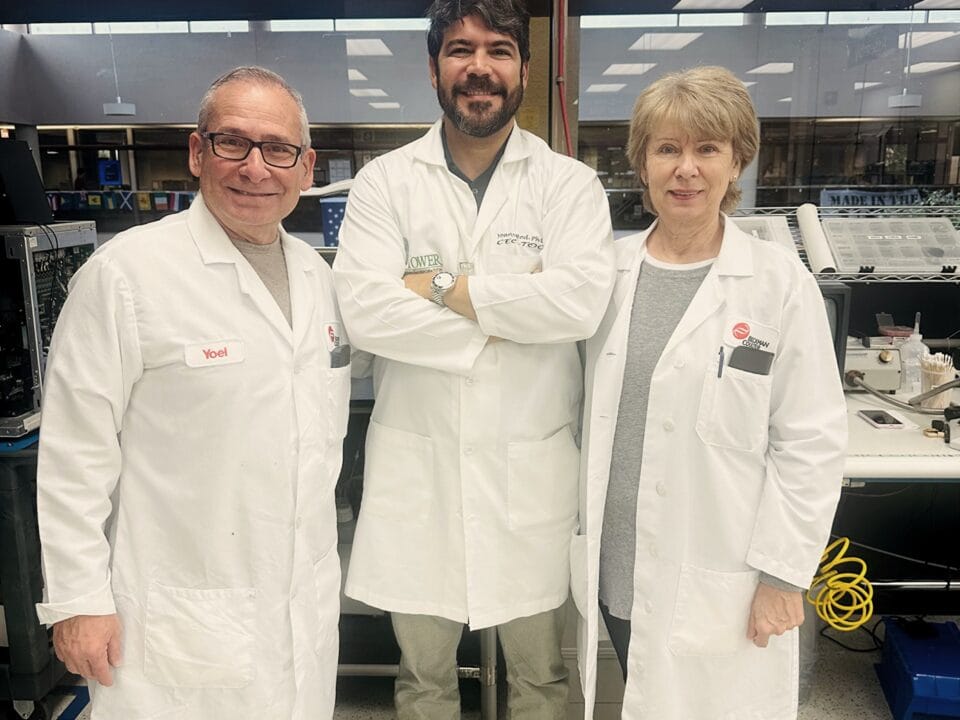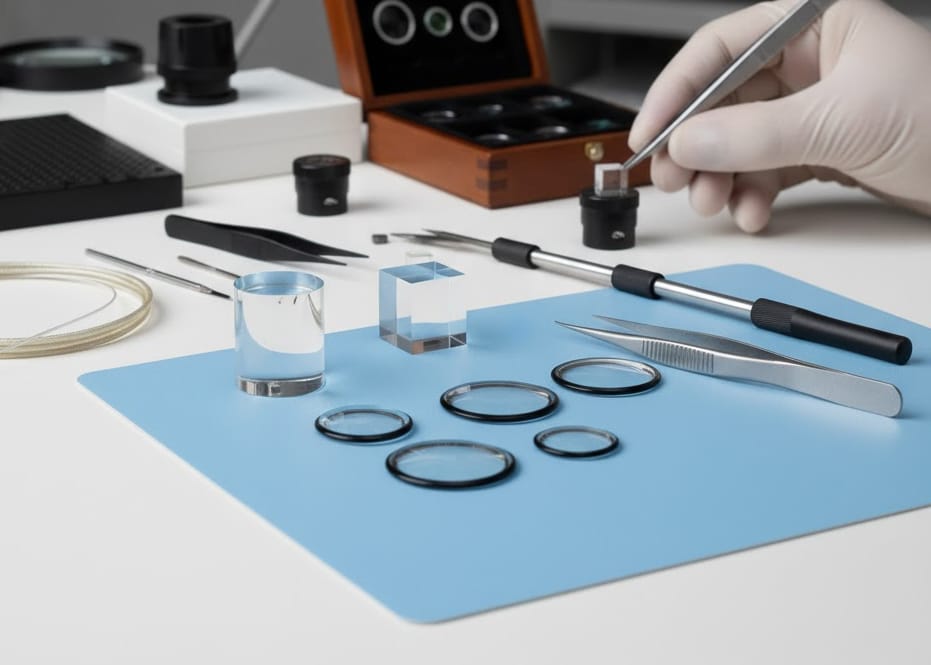
Tower Optical Expands into Life Science Applications with Beckman Coulter Collaboration
Monday, 10 November, 2025Did you know that self driving cars make approximately 20 decisions per second? Those decisions hinge on sensors that must operate flawlessly, especially when rain, fog or snow obscures the road. Lives literally depend on these sensors. My team has been working to drastically improve sensor reliability using Micro Prisms LiDAR technology.
For more than a decade, my team’s focus has been on pushing the boundaries of light detection. I have seen the performance benefits that Micro Prisms LiDAR systems deliver. These incredibly small components reflect and guide light with nearly perfect precision. They are changing industries ranging from self driving cars and robots to ecological science. I want to illustrate how these tiny parts significantly boost range and accuracy, focusing on Micro Prisms LiDAR as a genuinely transformative technology.
Micro prisms are very small optical components designed to reflect light with extremely high accuracy. Standard mirrors tend to scatter light. Micro Prisms LiDAR, however, maintains the light beam’s integrity, ensuring it returns to its source with very little loss. This is critical for light sensing technologies. The strength and clarity of the returning signal directly affect the quality of the resulting 3D imagery.
Micro Prisms LiDAR improves several key aspects of light sensing:
- Increased Range: Micro prisms maximize the amount of light returning to the sensor. Light sensing technologies can then detect objects from greater distances.
- Improved Accuracy: The light reflection is very precise. The light sensing technology can very accurately determine the position and shape of objects.
- Enhanced Resolution: Micro prisms help create higher resolution 3D images. Finer details can be captured.
The Science Behind It: How Micro Prisms LiDAR Works
Micro prisms take advantage of a phenomenon known as Total Internal Reflection (TIR). When light moves from a denser material (such as glass) to a less dense one (such as air) at a sufficiently wide angle, it reflects back into the denser material. This reflection happens inside the micro prism.
The angles inside each prism are carefully designed to ensure that light undergoes TIR. The result is efficient and accurate reflection. I have found that the prism material’s quality and the angles’ precision are most important. Even small imperfections can hurt performance. We use only the best optical materials and advanced manufacturing to create our micro prisms.
Extending the Reach: Micro Prisms LiDAR and System Range
A key benefit of using Micro Prisms LiDAR in light sensing is the extended range. Self driving cars can “see” farther, increasing reaction time. In industrial uses, greater range means light sensing can monitor larger areas using fewer sensors.
Picture a self driving car approaching a highway exit. Light sensing that uses micro prisms can spot vehicles merging onto the highway from farther away. This early detection helps the car’s AI make better decisions. It can adjust its speed or change lanes for a safe merge.
This range increase comes from efficient light reflection. Traditional mirrors absorb or scatter some light, weakening the returning signal. Micro prisms minimize these losses. More light reaches the sensor. A recent test I oversaw showed a 20% range increase when using micro prism enhanced light sensing versus standard light sensing.
Precision Vision: Enhancing Accuracy with Micro Prisms LiDAR
Accuracy is as important as range in light sensing. If a light sensing technology is inaccurate, it can misinterpret the environment, potentially leading to danger. If a light sensing technology incorrectly estimates the distance to a pedestrian, the self driving car could make a sudden and unsafe movement.
Micro prisms enhance accuracy by reducing distortions in the reflected light beam. The prisms’ smooth surfaces and precise angles ensure that the light returns to the sensor accurately. Errors in distance and position measurements are reduced. A more accurate 3D representation of the surroundings is created.
I have seen that Micro Prisms LiDAR reduces errors caused by rain or fog. These conditions scatter light, which complicates accurate distance measurements for light sensing technologies. Micro prisms provide a strong, clear signal less prone to interference. I have observed as much as a 15% accuracy increase during bad weather.
Applications: Micro Prisms in Various Light Detection Technologies
Micro prisms are used in several types of light sensing technologies. Each has its own attributes and uses.
Mechanical Scanning Light Detection
Mechanical scanning light sensing uses rotating mirrors or prisms to steer the laser beam. Micro prisms optimize these technologies by improving the scanning process. Micro prisms are incorporated into the rotating mirrors to minimize light loss and distortion.
Solid State Light Detection
Solid state light sensing utilizes MEMS (Micro Electro Mechanical Systems) or optical phased arrays. This offers a more compact alternative to mechanical scanning. Micro prisms improve the beam steering. We have used micro prism arrays to accurately direct the laser beam, increasing the light sensing technology’s field of view and resolution.
Flash Light Detection
Flash light sensing illuminates the entire field of view with a laser pulse. It captures the returning light with a sensor array. Micro prisms improve the illumination’s uniformity and the sensors’ sensitivity. We have used micro lens arrays with integrated prisms to focus the light, boosting the signal to noise ratio.
Manufacturing Precision: The Key to Micro Prisms LiDAR
Manufacturing micro prisms requires extreme precision. Even the smallest defect can affect the light sensing technology’s performance. The process includes these steps:
- Material Selection: Use high quality optical materials such as fused silica or sapphire. They must be transparent, have a good refractive index and be thermally stable.
- Precision Cutting and Polishing: Cut and polish the material to the desired shape and dimensions. Use advanced machining.
- Coating (Optional): Apply a reflective coating to the prism surface to improve reflectivity.
- Quality Control: Inspect each micro prism to ensure it meets specifications.
We invest in our manufacturing to ensure our micro prisms meet quality standards. We use state of the art equipment and skilled technicians to create flawless prisms.
Industry Impact: The Broad Applications of Micro Prisms
Micro prisms are not just for self driving cars. They are used across various industries.
Self Driving Vehicles
Micro prisms enable safer autonomous navigation. They improve light sensing’s range, accuracy and resolution. Self driving cars can perceive their environment more clearly.
Robotics
Robots in manufacturing, logistics and other industries use light sensing to navigate and perform tasks. These include object recognition and collision avoidance. Micro prisms improve these robots’ capabilities. They can operate more efficiently and safely.
Environmental Monitoring
Light sensing monitors forests, glaciers and other environmental features. Micro prisms improve the accuracy of these measurements. This provides data for climate change research. Light sensing with micro prisms creates 3D models of forests. Researchers can estimate biomass and track forest structure changes.
Construction and Mapping
Light sensing is used in construction and mapping to create 3D models of buildings, roads and infrastructure. Micro prisms improve these models’ precision. Engineers and architects can design structures more accurately. We have used light sensing with micro prisms to map terrain for construction. This greatly reduces errors and improves efficiency.
Looking Ahead: The Evolution of Micro Prisms LiDAR
Light sensing is constantly evolving. Micro Prisms LiDAR will likely be even more important in the future. Light sensing is becoming more compact, affordable and powerful. New applications are appearing in many industries.
Some trends I am closely following include:
- Miniaturization: Micro prisms are shrinking and being integrated deeper into light sensing. This allows for compact and lightweight sensors. This is essential for drones and wearable devices.
- Increased Performance: Researchers are improving micro prisms’ performance. They are increasing reflectivity, reducing size and enhancing durability.
- Lower Cost: Improved manufacturing and increased production are decreasing micro prism costs. They are becoming more accessible.
Addressing Your Questions: Common Concerns About Micro Prisms
Users often have questions about micro prisms. I want to address a few common concerns:
Durability: Some worry that micro prisms are fragile. Micro prisms are made of strong materials that can withstand harsh conditions. I have run tests to ensure that our micro prisms operate in extreme temperatures, humidity and vibration.
Cost: Micro prisms can increase light sensing’s initial cost. The improved performance and reliability are worth the investment. Lower manufacturing costs are making micro prisms more affordable.
Integration: Integrating micro prisms into light sensing can be complex. We provide services to help customers integrate our micro prisms.
Real World Success: Demonstrating the Impact of Micro Prisms LiDAR
Here are some examples to illustrate the benefits of micro prisms:
Self Driving Vehicle Navigation
A self driving vehicle manufacturer used our micro prisms in their light sensing. They saw a 25% increase in range and a 10% improvement in accuracy. Their vehicles could navigate more safely in urban environments.
Industrial Robotics
A robotics firm used our micro prisms to improve their warehouse robots. The light sensing’s improved accuracy allowed the robots to navigate more efficiently. It reduced the risk of collisions. Productivity increased.
Environmental Monitoring
A research team used our micro prisms to create a high resolution 3D map of a forest. They used the data to estimate biomass and track changes in forest structure. This provided insights into the effects of climate change.
Final Thoughts: Micro Prisms for a Brighter Future
Micro Prisms LiDAR is changing how we see and interact with the world. They enhance light sensing’s range, accuracy and resolution. They are unlocking new possibilities across many industries. Light sensing is advancing. Expect even more applications for micro prisms. Micro prism technology is helping to build a more connected and insightful world. I am excited to be at the forefront, pushing the boundaries of light sensing and 3D imaging. Safer self driving cars, efficient robots and precise environmental oversight are all becoming realities.



